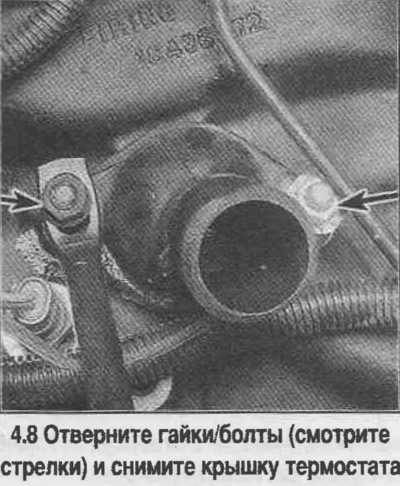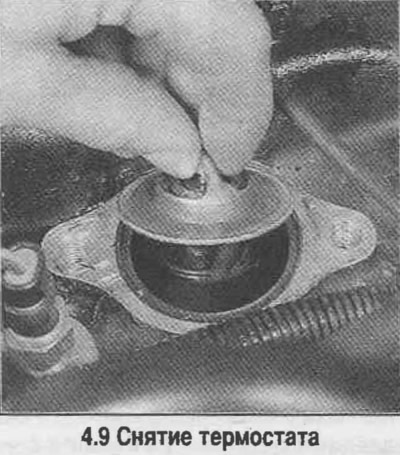Attention! Driving without a thermostat is highly discouraged as the processor unit will run in open loop mode, resulting in increased fuel consumption and emissions.
1. Before replacing the thermostat, check the coolant level, the tension of the drive belt, and the serviceability of the pointer and temperature sensor.
2. If the engine warms up for a long time, the thermostat should be replaced.
3. If the engine overheats frequently, check the temperature of the upper radiator hose. If the hose is cold, the thermostat is closed and should be replaced.
4. If the upper radiator hose is hot when the engine overheats, the thermostat is open and fluid enters the radiator. The cause of overheating in this case is a malfunction of the engine systems.
5. If the engine has overheated, then as a rule, the cylinder head gasket is damaged, scoring is found on the pistons, and the cylinder head is deformed or split.
6. Drain about 3 liters of coolants.
7. Disconnect the upper radiator hose from the thermostat cover, which is located in front of the intake manifold.
8. Loosen the nuts/bolts and remove the cover (see photo).

9. Mark the position of the installed thermostat and remove the thermostat (see photo).

10. Clean the contact surface of the thermostat.
-eleven. Apply a thin layer of RTV sealant to the split planes of the body and thermostat cover, install a new thermostat. Make sure the spring is facing towards the body (or intake manifold).
12. Install a new gasket on the body, without displacing the gaskets, install the cover and tighten the bolts. Tighten the bolts to the specified torque. Exceeding the tightening torque will deform the cover.
13. Install the removed parts. Pour fluid into the cooling system.
